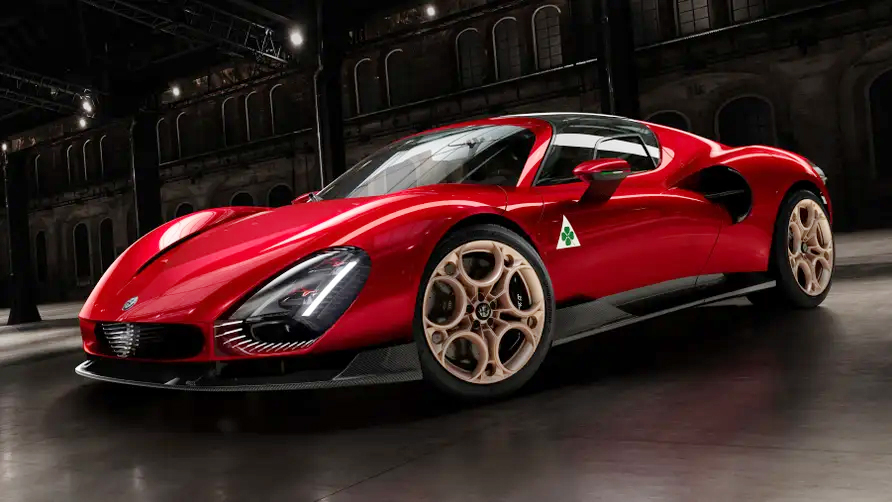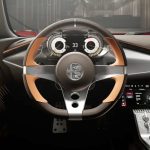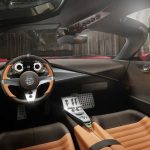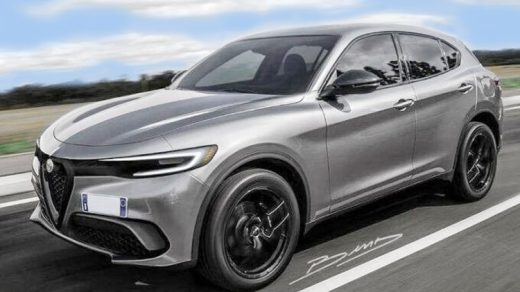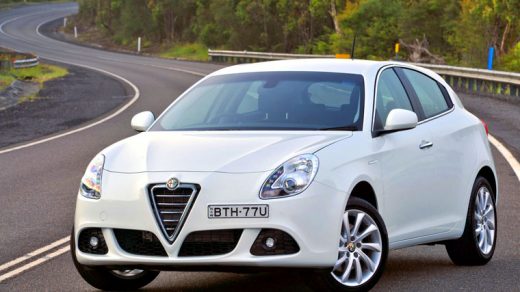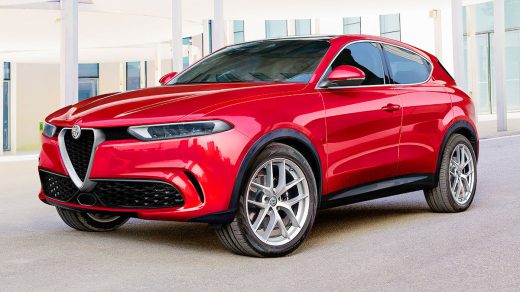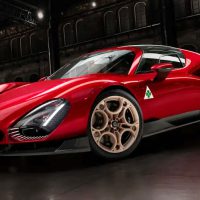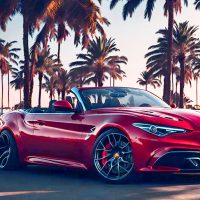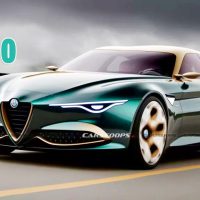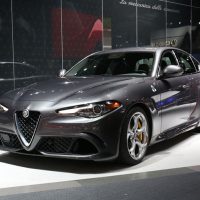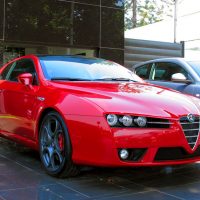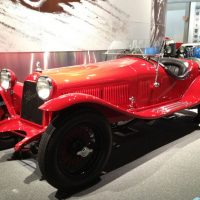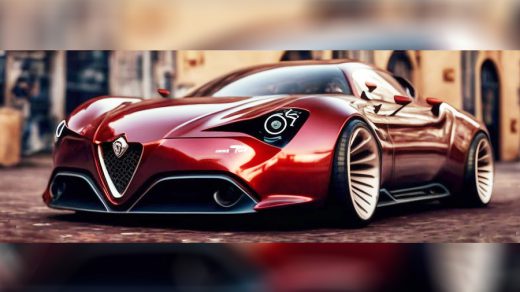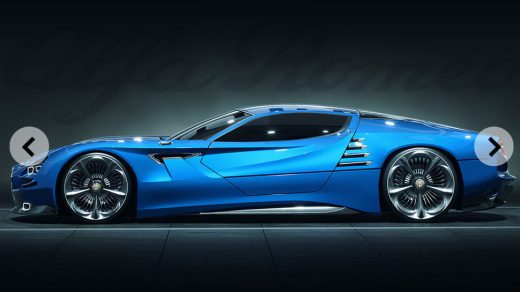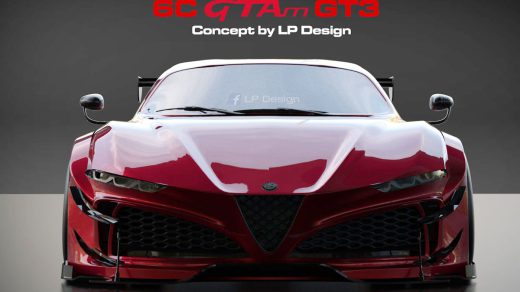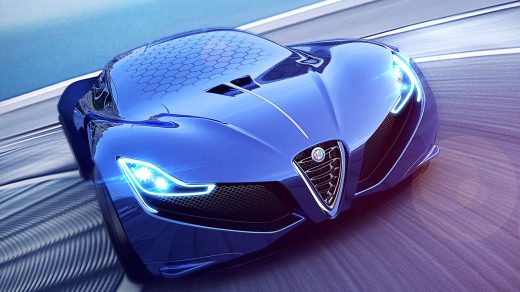- Photo credit: Top Gear
- Photo credit: Top Gear
- Photo credit: Top Gear
- Photo credit: Top Gear
The new supercar Alfa Romeo 33 Stradale is not only a worthy successor to the 8C Competizione model, but also an ideological successor to the road model 33 Stradale from the sixties, which was developed based on the racing car Alfa Romeo Tipo 33.
With the new mid-engine supercar, the company is reviving the tradition of producing exclusive cars for individual orders. The last such Alfa was made over half a century ago, in 1969. Therefore, the production volume of the Alfa Romeo 33 Stradale model is very limited: only 33 units worldwide. However, from 1967 to 1969, only 13 units of the first-generation cars were made (plus five chassis for third-party projects).
The appearance of the new coupe was designed by the in-house team of the Alfa Romeo Centro Stile division, which tried to create a modern interpretation of its predecessor. Butterfly doors and overall proportions are reproduced, including one important characteristic: the highest point of the car is located in the center of the roof, not behind the upper edge of the windshield, as in most modern cars.
It is based on a monocoque chassis made of carbon fiber with aluminum reinforcements and subframes attached to it. The transparent rear cover is made of polycarbonate. The Alfa Romeo 33 Stradale does not have active aerodynamic elements, and the drag coefficient is not incredible (0.375), but the engineers have tried to achieve a perfect balance of lift and downforce.
There are two options for the two-seater cockpit: Tributo is made of leather and aluminum, and Alfa Corse is made of carbon fiber and Alcantara. The instruments are virtual, with a three-dimensional projection on the windshield, but there are no sensors and touch-sensitive screens in the cabin: only metal classic switches, some of which are located on the console above the driver’s head.
The Alfa Romeo 33 Stradale has an original chassis with double wishbones at the front and rear. Adaptive dampers are installed, and in front, there is a hydraulic mechanism that can raise the front of the car by 50 mm at speeds up to 40 km/h. The Brembo braking system is wire-controlled with carbon-ceramic discs: six-piston mechanisms at the front and four-piston at the rear. It is stated that Formula 1 factory team driver Valtteri Bottas was involved in fine-tuning the car.
The supercar is envisioned in two versions – gasoline and electric. Behind the seats is a 3.0-liter twin-turbo V6 engine, which is a further evolution of the 2.9-liter V6 engine known from serial Alfas in Quadrifoglio versions. But if those engines produce 510-540 hp, then for the supercar, it is boosted to 620 hp. The transmission is an eight-speed dual-clutch robotic one that sends power exclusively to the rear axle via electronically controlled differential lock.
Driving modes Strada and Pista (street and track) are provided, but the stability system can be completely disabled. The gasoline coupe, weighing less than 1.5 tons, should accelerate to “a hundred” in less than three seconds: precise parameters will be announced after all tests. The maximum speed is 333 km/h. And this will be the last gasoline-powered supercar of Alfa Romeo.
The electric version has the same 800-volt engineering as the Maserati GranTurismo Folgore coupe. Three traction motors produce “over 750 hp”: one is located on the front axle and two on the rear, allowing thrust vector control. The traction battery capacity is 102 kWh, but only 90 kWh can be used. The estimated range on a single charge is 450 km. The electric Alfa Romeo 33 Stradale will be noticeably heavier than the gasoline one: weighing nearly 2.1 tons! The maximum speed will be slightly lower (310 km/h), but the acceleration time to “a hundred” should be comparable (less than three seconds).
The production of the supercar will be carried out by the Touring Superleggera studio, with the first commercial unit being delivered to the customer only in December 2024. Alfa Romeo claims that all 33 units have already been ordered. The price of each is around two million euros, making it the most expensive new Alfa in history.

